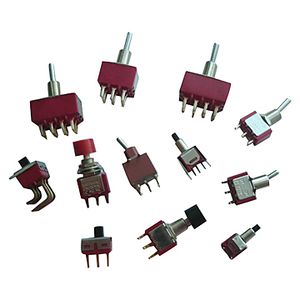Difference between revisions of "Load Switches"
(Created page with "Category:Switches{{Knoppen}} <noinclude><!------------------------------------------------ * READ THIS FIRST * Only edit this page if you can improve the content. * Impr...") |
|||
| Line 7: | Line 7: | ||
* Please start editing this page after the /noinclude | * Please start editing this page after the /noinclude | ||
* -------------------------------------------------></noinclude> | * -------------------------------------------------></noinclude> | ||
[[File:Load switch.jpg|thumb|right|Load Switches]] | |||
'''Load Switch''' is a remotely controlled relay that is placed on home appliances which consume large amounts of electricity, such as air conditioner units and electric water heaters. | |||
Most load switches consist of a communication module and the relay switch and can be used as part of a demand response energy efficiency system such as a smart grid. Such a switch operates similarly to a pager, receiving signals from the power company or electrical frequency shift to turn off or reduce power to the appliance during times of peak electrical demand. Usually, the device has a timer that will automatically reset the switch back on after a preset time. Some operation intolerant appliances, such as dryers, use [[Switches]] that can reduce or shut off power to their heating coils yet still tumble until signaled to resume full power. | |||
Most load switches have only one-way communication, receiving signals from the power company. Some are now two-way, which helps the power company locate faulty load switches. Others are stand alone at the appliance and operate independently by monitoring electrical load without contacting anyone. Many electric cooperatives offer free installation of load switches to their members, sometimes with incentives. | |||
Load switches can be a powerful tool to prevent brown-outs and black-outs when electricity storage, transmission, or generation resources are insufficient. It allows the electric companies to respond to emergencies without shutting off all power to customers. They also reduce costs for electric companies by reducing the amount of expensive electricity they need to buy from other companies during peak demand. | |||
==Sources== | |||
[http://en.wikipedia.org/wiki/Load_control_switch Wikipedia Load Switch] | |||
Latest revision as of 01:42, 21 December 2012
Load Switch is a remotely controlled relay that is placed on home appliances which consume large amounts of electricity, such as air conditioner units and electric water heaters. Most load switches consist of a communication module and the relay switch and can be used as part of a demand response energy efficiency system such as a smart grid. Such a switch operates similarly to a pager, receiving signals from the power company or electrical frequency shift to turn off or reduce power to the appliance during times of peak electrical demand. Usually, the device has a timer that will automatically reset the switch back on after a preset time. Some operation intolerant appliances, such as dryers, use Switches that can reduce or shut off power to their heating coils yet still tumble until signaled to resume full power. Most load switches have only one-way communication, receiving signals from the power company. Some are now two-way, which helps the power company locate faulty load switches. Others are stand alone at the appliance and operate independently by monitoring electrical load without contacting anyone. Many electric cooperatives offer free installation of load switches to their members, sometimes with incentives. Load switches can be a powerful tool to prevent brown-outs and black-outs when electricity storage, transmission, or generation resources are insufficient. It allows the electric companies to respond to emergencies without shutting off all power to customers. They also reduce costs for electric companies by reducing the amount of expensive electricity they need to buy from other companies during peak demand.
